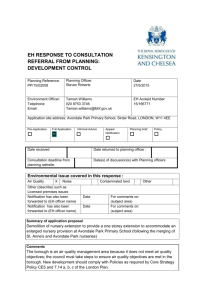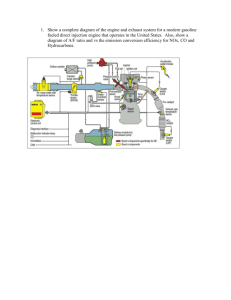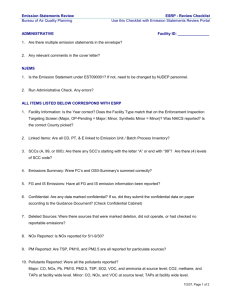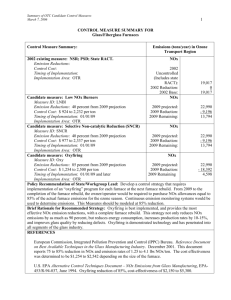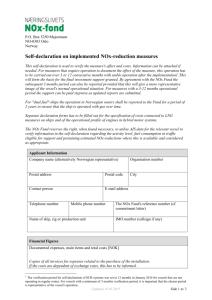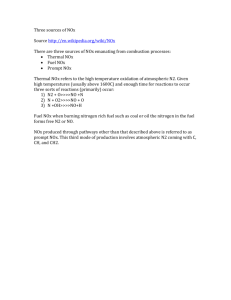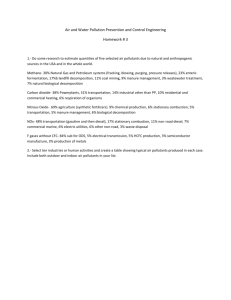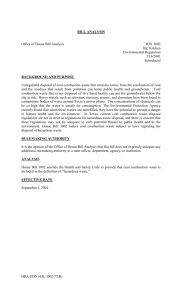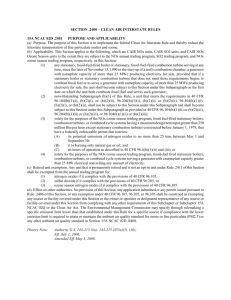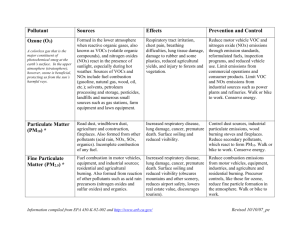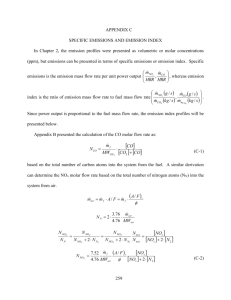EFFECT OF MULTI-AIR STAGED ON NOx EMISSION FROM COAL
advertisement
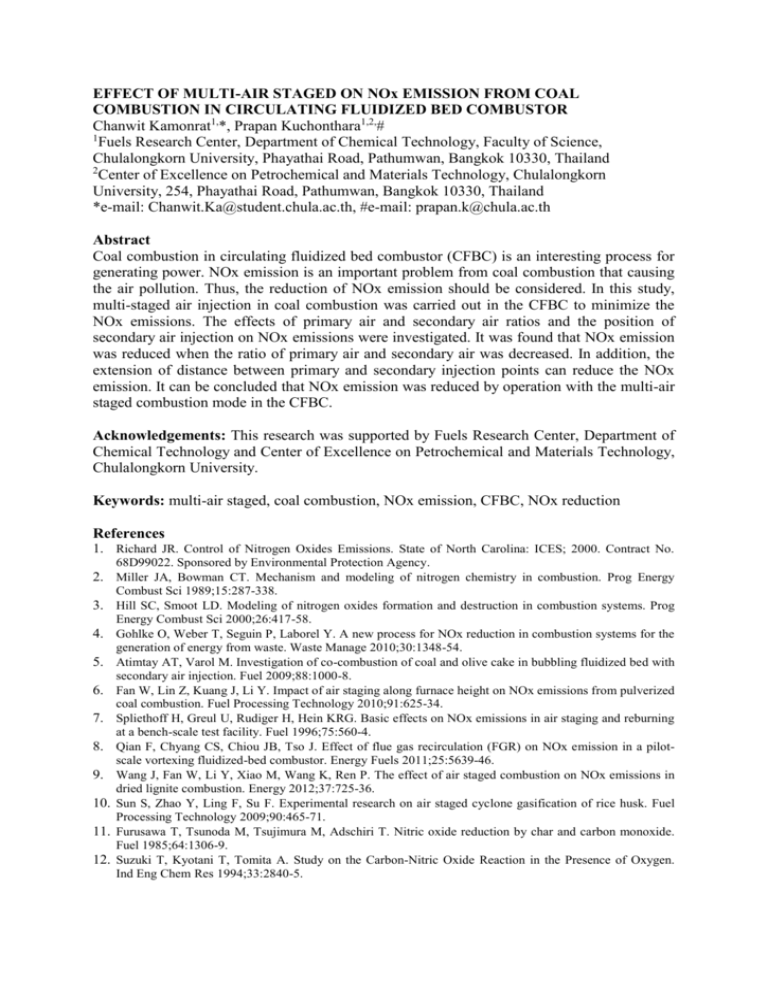
EFFECT OF MULTI-AIR STAGED ON NOx EMISSION FROM COAL COMBUSTION IN CIRCULATING FLUIDIZED BED COMBUSTOR Chanwit Kamonrat1,*, Prapan Kuchonthara1,2,# 1 Fuels Research Center, Department of Chemical Technology, Faculty of Science, Chulalongkorn University, Phayathai Road, Pathumwan, Bangkok 10330, Thailand 2 Center of Excellence on Petrochemical and Materials Technology, Chulalongkorn University, 254, Phayathai Road, Pathumwan, Bangkok 10330, Thailand *e-mail: Chanwit.Ka@student.chula.ac.th, #e-mail: prapan.k@chula.ac.th Abstract Coal combustion in circulating fluidized bed combustor (CFBC) is an interesting process for generating power. NOx emission is an important problem from coal combustion that causing the air pollution. Thus, the reduction of NOx emission should be considered. In this study, multi-staged air injection in coal combustion was carried out in the CFBC to minimize the NOx emissions. The effects of primary air and secondary air ratios and the position of secondary air injection on NOx emissions were investigated. It was found that NOx emission was reduced when the ratio of primary air and secondary air was decreased. In addition, the extension of distance between primary and secondary injection points can reduce the NOx emission. It can be concluded that NOx emission was reduced by operation with the multi-air staged combustion mode in the CFBC. Acknowledgements: This research was supported by Fuels Research Center, Department of Chemical Technology and Center of Excellence on Petrochemical and Materials Technology, Chulalongkorn University. Keywords: multi-air staged, coal combustion, NOx emission, CFBC, NOx reduction References 1. Richard JR. Control of Nitrogen Oxides Emissions. State of North Carolina: ICES; 2000. Contract No. 2. 3. 4. 5. 6. 7. 8. 9. 10. 11. 12. 68D99022. Sponsored by Environmental Protection Agency. Miller JA, Bowman CT. Mechanism and modeling of nitrogen chemistry in combustion. Prog Energy Combust Sci 1989;15:287-338. Hill SC, Smoot LD. Modeling of nitrogen oxides formation and destruction in combustion systems. Prog Energy Combust Sci 2000;26:417-58. Gohlke O, Weber T, Seguin P, Laborel Y. A new process for NOx reduction in combustion systems for the generation of energy from waste. Waste Manage 2010;30:1348-54. Atimtay AT, Varol M. Investigation of co-combustion of coal and olive cake in bubbling fluidized bed with secondary air injection. Fuel 2009;88:1000-8. Fan W, Lin Z, Kuang J, Li Y. Impact of air staging along furnace height on NOx emissions from pulverized coal combustion. Fuel Processing Technology 2010;91:625-34. Spliethoff H, Greul U, Rudiger H, Hein KRG. Basic effects on NOx emissions in air staging and reburning at a bench-scale test facility. Fuel 1996;75:560-4. Qian F, Chyang CS, Chiou JB, Tso J. Effect of flue gas recirculation (FGR) on NOx emission in a pilotscale vortexing fluidized-bed combustor. Energy Fuels 2011;25:5639-46. Wang J, Fan W, Li Y, Xiao M, Wang K, Ren P. The effect of air staged combustion on NOx emissions in dried lignite combustion. Energy 2012;37:725-36. Sun S, Zhao Y, Ling F, Su F. Experimental research on air staged cyclone gasification of rice husk. Fuel Processing Technology 2009;90:465-71. Furusawa T, Tsunoda M, Tsujimura M, Adschiri T. Nitric oxide reduction by char and carbon monoxide. Fuel 1985;64:1306-9. Suzuki T, Kyotani T, Tomita A. Study on the Carbon-Nitric Oxide Reaction in the Presence of Oxygen. Ind Eng Chem Res 1994;33:2840-5.
